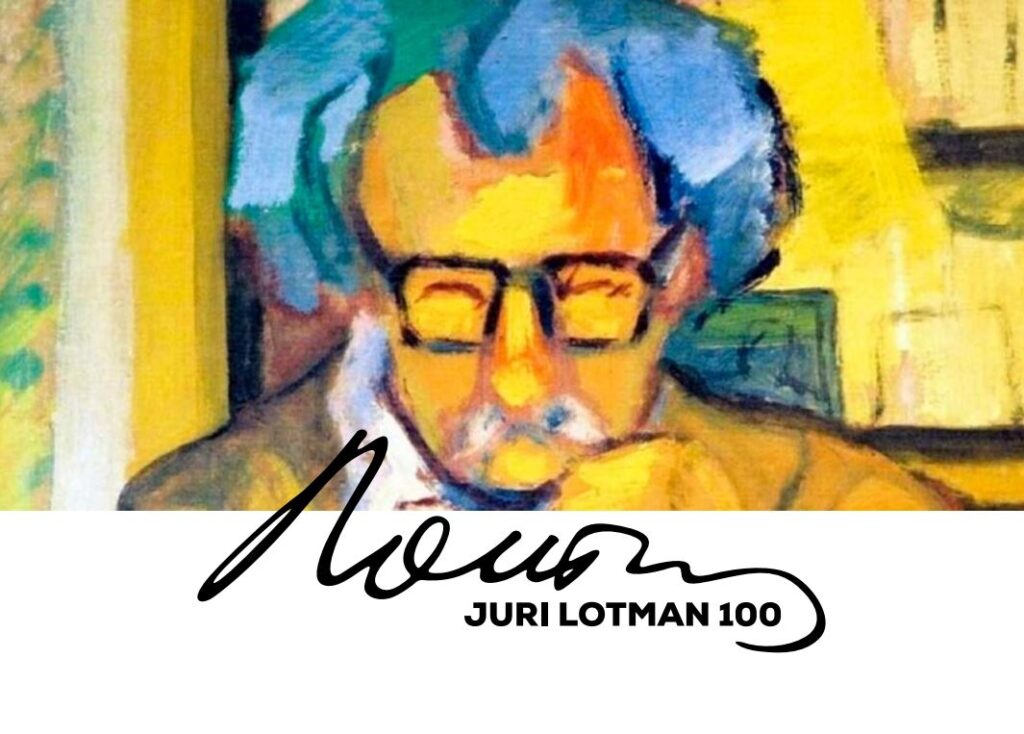Panel on decadence during WWI on the 27th of February 2022 as part of Lotman conference

An international conference Juri Lotman’s Semiosphere will take place in Tallinn and Tartu from 25th till 28th of February 2022.
We cordially invite you to join the panel held by the project members. The panel is titled as Decadence in Estonian Culture During and After the First World War and it will take place on the 27th of February at 4.30 p.m. at the library of the University of Tartu.
Mirjam Hinrikus’ abstract
N. Triik’s Martyr (Märter) and A. H. Tammsaare’s Juudit as examples of Estonian decadence
I will start my presentation with an intriguing painting by an artist of the Young Estonia group, Nikolai Triik, titled Märter (Martyr, 1913). I will link Triik’s Martyr with his other picture Metropol (Metropolis, 1913). However, most of all I am interested in A. H. Tammsaare’s play Juudit (Judith, 1921). Thus I will use these two pictures by Triik to interpret Tammsaare’s Juudit, although there is no evidence of any reciprocal influence between the works by these two male artists. Among other references, Martyr is closely influenced by Nietzschean decadence. Namely, this figure of the martyr in Triik’s Märter relates to the figure of the Dionysian decadent artist, which emerges in many examples of Estonian culture often more or less explicitly in relation to the representation of the metropolis. Yet in both of the above mentioned pictures by Triik one can also find references to other ideas by Nietzsche. In other words, in addition to Nietzsche’s Dionysian exuberance, which in turn refers to his term “life”, there are also references, for example, to his ideas about the Overman, to his ambition to overturn (Unwert) the highest values and establish new ones that would promote stronger individuals and a more creative culture. All these Nietzschean ideas are also on the fore in Tammsaare’s Judith, his most decadent text (others being The Fly, 1917 and Shadings, 1917). However, the paper deals not only with Nietzschean decadence but also other intertexts and representations of decadence (such as fleurs du mal, femme fatale, erotic desire and homosexuality).
Lola Annabel Kass’ abstract
The Flowers of Evil in Estonian Decadent Art
At the end of the 19th century the image of the flowers of evil became popular among European creative people who were fascinated by the decadent style and Baudelaire’s collection of poems Les Fleurs du mal (The Flowers of Evil, 1857). The image alludes to the influence of Baudelaire’s poem, as well as the conscious and semi-conscious elaborations and modifications of the meaning of Baudelaire’s flowers of evil. The flowers of evil symbolize the aesthetic beauty of evil. The image was born from Baudelaire’s and later decadent artists’ desire to visualize the flourishing of evil in connection to personal struggles and the issues of the modern world. However, the word „evil” carries multiple meanings in decadent works, just as the French word “mal” denotes not only evil, including personified evil and sin, but also illness, pain, harm and wrongfulness. As such, the image was used to depict the blossoming of evil in its many forms. The paper seeks to reveal how the image became popular among Estonian visual artists and writers in the first half of the 20th century. The aim is to examine how creative people, such as Eduard Wiiralt, Gori, and Friedebert Tuglas, used the image to visualize the flowering of evil and various contradictions, which were also seen as a problematic feature of contemporary life. The phrase „flowers of evil” is itself a contradiction, given that flowers are not usually associated with evil, but beauty and goodness. The image was thus often used to emphasize ambivalence and paradoxes.
Merlin Kirikal’s abstract
Decadent Collaborations: Johannes Semper and Ado Vabbe
Cooperation between male writers, artists and philosophers has been a common practice in modern Western cultures. However, in cultural decadence a certain „thinking and acting collectively” gained unforeseen popularity and creative personae worked side by side in multiple ways. Teaming up was either imaginative or material. The former contains quoting or alluding to each other’s work, pulling inspiration from and reworking evocative cultural figures (e.g. representations of the famous femme fatale Salome) or describing celebrated works of music, art and dance in literature. The latter – joining forces materially – refers to doing things together, creating a tight decadent relationship, as it occurred between the Estonian writer Johannes Semper and his colleague, the artist Ado Vabbe, who illustrated all of Semper’s books from 1917 until 1926. During that time, they were obsessively interested in similar symbols, themes and figures, starting from erotic female dancers and commedia dell’arte’s androgynous characters, ending with modern urban landscapes, Bergson’s élan vital and fake ironic hearts representing the impossibility of genuine love. In this paper, I will dive into the flourishing of this relationship. Was it just a writer’s need for idiosyncratic and time sensitive illustrations? Or an artist’s way of making a name for his oeuvre, reaching a larger audience? I will scrutinize two common topics in their work: the dynamics of fakeness and the representations of male and female energy, including sexual desire.
